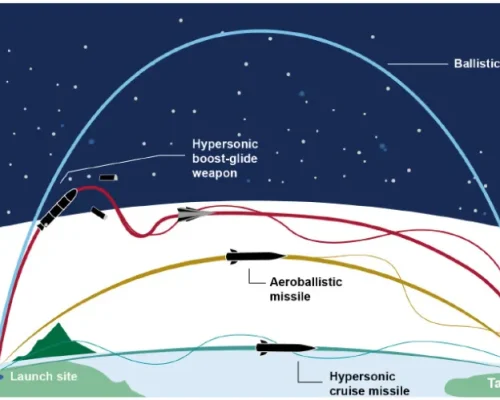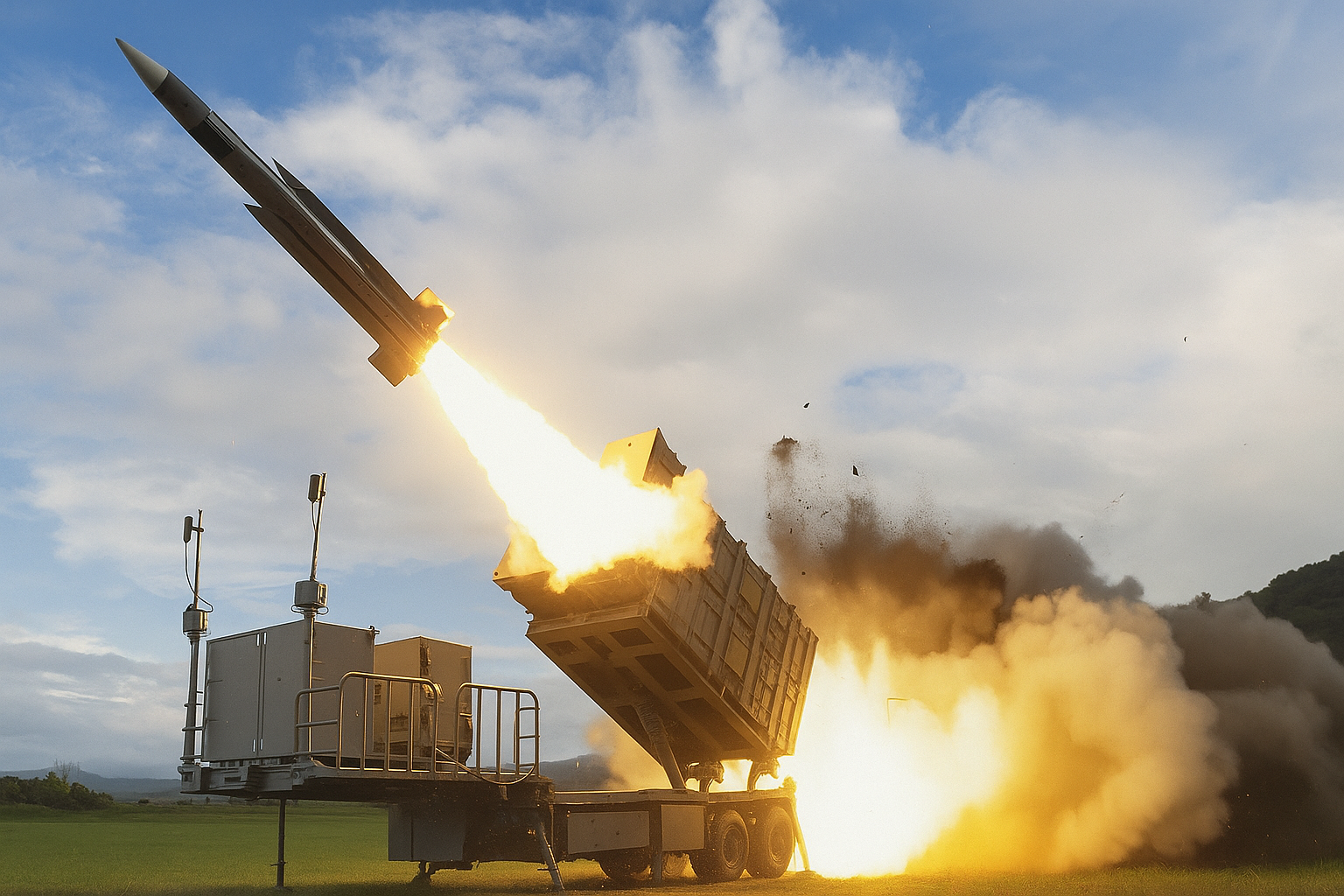Under Project Vishnu, DRDO has developed the ET-LDHCM (Extended Trajectory – Long Duration Hypersonic Cruise Missile).
Table of Contents
India is on the brink of revolutionizing its strategic defense posture with the development of a next-generation hypersonic missile system. Codenamed Project Vishnu, this ambitious DRDO program could not only place India among the select few nations with hypersonic strike capabilities but also fundamentally alter the balance of power in Asia. More than a technological marvel, this missile sends a loud and clear message: India is ready to defend its sovereignty and regional interests with precision, speed, and resolve.
Project Vishnu: India’s Leap into Hypersonic Era
According to media reports, the new Extended Trajectory – Long Duration Hypersonic Cruise Missile is expected to achieve speeds of up to Mach 8 (approximately 9,800 to 11,000 km/h) and cover a range of around 1,500 kilometers. If these specifications are verified by experts, the missile would significantly surpass existing cruise missile systems like the BrahMos in terms of both speed and operational range.
Backed by the Defence Research and Development Organisation (DRDO) and involving input from top Indian aerospace experts, the project focuses on a scramjet-powered missile that promises unmatched speed, range, and maneuverability.
Scramjet Engine: The Heart of the Beast
🇮🇳 #India successfully test-fired it's long range #hypersonic missile from Dr APJ Abdul Kalam Island, off the coast of Odisha. #IADN pic.twitter.com/W5U4FiQZme
— News IADN (@NewsIADN) November 17, 2024
Comparison with BrahMos: An Evolution in Speed and Precision
| Feature | BrahMos | Hypersonic Missile (Vishnu) |
|---|---|---|
| Speed | Mach 2.8–3 | Mach 7+ |
| Engine | Ramjet | Scramjet |
| Launch Platforms | Land, Sea, Air | Land, Sea, Air (future: Sub) |
| Role | Tactical Strike | Strategic & Tactical Deterrent |
Ready-for-Use Platforms: A Tri-Services Asset
India plans to integrate its hypersonic missile with multiple platforms:
- Mobile land-based launchers for quick deployment along borders
- INS Visakhapatnam-class destroyers for naval superiority
- Modified Su-30 MKI and Rafale jets for rapid air deployment
- Submarine-based variants for second-strike capability (in future development)
This flexibility gives India the edge to strike deep inside enemy territory within minutes—neutralizing key command centers and critical infrastructure.
Hypersonic vs Ballistic vs Cruise Missiles: What’s the Difference?

Ballistic Missiles: Travel in a high-arc trajectory; predictable and easier to intercept
Cruise Missiles: Fly at low altitudes with subsonic/supersonic speeds; good for precision strikes
Hypersonic Missiles: Travel faster than Mach 5 with atmospheric flight and in-flight maneuverability, making them almost impossible to intercept
“Also learn about: Types of Missiles in India”
Matching China: Turning the Tables
China has been aggressively pursuing hypersonic weapons, reportedly deploying systems like the DF-ZF. India’s development of similar (or even more agile) hypersonic missiles signals a credible counter to Beijing’s technological edge.
If China ever considers offensive action, either along the LAC or in a Taiwan-related scenario, India’s hypersonic arsenal will serve as a powerful deterrent, capable of targeting China’s high-value strategic assets with surgical precision.
The U.S. Reaction: Silent Celebration
The United States and its allies have taken quiet notice of India’s missile advancement. With growing Indo-Pacific tensions and fears of a China-Taiwan conflict, a strong and strategically aligned India is exactly what Washington wants.
- President Donald Trump recently hinted to support Taiwan if war broke out. In such a scenario, China faces the risk of a two-front conflict:
- Primary front: Taiwan, backed by the U.S. and its allies
- Secondary front: India, possibly exploiting the moment to exert pressure in Tibet or Ladakh
This strategic dilemma may force China to rethink any rash military aggression.
Strategic Equalizer: Leveling the Battlefield
One of the most critical benefits of hypersonic missiles is how they level the playing field for countries that may not have air superiority. Even without hundreds of 5th-gen fighters, a few hypersonic missiles can hold an adversary’s airbases, radar stations, and aircraft carriers hostage.
This is especially vital for India, which faces numerical disadvantages in air power compared to China. Hypersonic missiles act as force multipliers, giving India a powerful counterpunch.
Crushing Air Defenses: Hypersonic Superiority
What makes hypersonic missiles uniquely lethal is their ability to evade even the most advanced air defense systems, including S-400s and THAAD. Their:
- Blistering speed
- Low-altitude flight paths
- In-flight maneuverability
It make it nearly impossible for current radar and missile systems to track and destroy them in time.
Asia’s Power Dimensions Are Shifting
With the development of a nuclear-capable hypersonic missile, India is no longer just a balancing power, but an emerging pole in the new Asian order.
Pakistan lacks the technological depth to counter hypersonic threats. China must factor in Indian capabilities in any strategic calculus. ASEAN and Indo-Pacific states see India as a reliable counterweight to Chinese dominance
This could usher in a new era of Asian strategic multipolarity, with India at the core.
Conclusion: India’s Hypersonic Missile—A Warning and a Promise
India’s new hypersonic missile isn’t just a weapon—it’s a message. A message of technological confidence, of strategic maturity, and of geopolitical clarity.
As the world watches rising tensions in the Indo-Pacific, one thing is becoming evident: India is not just defending borders—it is redefining them. And through Project Vishnu, India is crafting a future where speed, precision, and deterrence will shape peace.
Army Chief announces Rudra Brigade, Bhairav Battalions: India’s Future-Ready Military Units

Pratik Kondawale
Strategist | Indian Defence & Global Affairs
Founder of GeoLens.in, Pratik writes in-depth analysis on India’s defence strategy, military tech, and global power shifts delivering sharp insights through an Indian lens.

2 thoughts on “Project Vishnu: India’s New Hypersonic Missile: A Game Changer in Asian Power”